Pamela Littky was born in Palm Beach, Florida. After receiving a BFA in Fine Arts from the University of Arizona, she moved to Los Angeles, where she has been pursuing photography professionally for 12 years. Littky has photographed loads of of celebrities and rock stars, and has worked for a number of commercial clients. Despite a busy schedule, Littky always makes time for personal work. She spent three years documenting two towns that make up the “Gateway to Death Valley” in the Mojave Desert. In 2014, that work was published in her first monograph, Vacancy (Kehrer Verlag). Littky is a household name in Los Angeles, and PDN asked her to share her work and insights about the photography industry.
Photo District News: How’d you become a photographer?
Pamela Littky: I never assisted. I loved photography since I was a little kid, but ended up studying art and design in college. When I got out of school, I worked as a graphic designer, and then soon after, as an art director. Ultimately, I decided what I really wanted to do was shoot.
As far as influences, Ellen von Unwerth was always a favorite of mine. I loved the energy in her photos and that her images exuded authenticity and fun. But I’ve been influenced by/and have loved many photographers: Diane Arbus, Alec Soth, Stephen Shore, Jim Marshall, Larry Sultan, Massimo Vitali and Joel Sternfeld, to name a few. I have the old memories of seeing amazing photographs and it exciting me. When I got my first camera, I’d take photos of my Barbie dolls and set up shots of the girls in my cabin at camp. Later I was the photo editor of my high school paper…I was that kid that always had a camera in her hand.
PDN: Did you begin as a portrait photographer?
PL: I did start as a portrait photographer but really predominantly in music. I’m a big music person and working with musicians was always a really comfortable thing for me. Being based in L.A., which a prevalent music/photography scene, I was able to build a portfolio by shooting a bunch.
PDN: Most celebrities don’t give you a lot of time. How do you work around that? What do you do to prepare?
PL: Being prepared and set up so that you’re ready the moment the subject steps on set is key. You want to be mentally freed up to allow for the first moments with the subject to be about making a connection and to quickly find a rapport with them. I feel like the magic and the best shots come organically, only when your head isn’t filled with worry or question while trying to solve a lighting issue with the talent already in place.
PDN: Do you have a go-to team you regularly work with?
PL: I definitely have my favorite go-to people to work with who are not only super talented, but they’re also nice people. It’s important for me to have a pretty chill vibe on set, and I prefer to work with people whom I like.
PDN: How do you make time for and fund your personal work?
PL: I’m always trying to think of ideas for personal projects and I have a list that I’ve been compiling for years of things I’d want to pursue at some point. I find inspiration everywhere, from traveling, to listening to music to just taking walks in my neighborhood in Los Angeles. Some ideas are inherently more doable than others for timing or budgetary reasons. But it’s very hard for me to start a project and not want to finish it, so when I do commit to one, I always see it through, which I think is important. I get super inspired and excited when I start a project, especially when I see it start to evolve into something meaningful.
PDN: How much time do you spend shooting personal work?
PL: I spend a lot of time shooting personal work. Shooting in general brings me a lot of joy, but doing the personal stuff, to me, is incredibly satisfying. Every year I try to pick a single project to work on, some bleed over into the following year.
PDN: One of your personal projects was Vacancy. How’d you get it published?
Vacancy (what has since become my first monograph) ended up lasting three years. There was just so much to shoot and I was inspired by how the project was evolving. When I finished shooting Vacancy, I began working with Alan Rapp, a book consultant based in New York. He had previously worked with my publisher, Kehrer and made the introduction to them. They’re a German publisher, and were excited by the Americana aspect and liked the sparseness of the desert imagery, and we decided to work together. I had known of their books and was super impressed by their catalogue and how beautifully they printed their books.
PDN: What are you working on now, or hope to be?
PL: Recently I’ve been having fun shooting commercial work, which is interesting for me to work on projects with a more collaborative vibe. It’s a nice balance to my personal work, which is all just me. I just finished shooting for my second monograph, The Villa Bonita, where I photographed all of the inhabitants of a single apartment building in the center of Hollywood. And I’m about to start my latest personal project shooting at state and county fairs all over the United States. —Amy Wolff
Related: Stand-Out Photo Promos: Pamela Littky’s “Happy Hour” Set (for PDN Subscribers only; login required)
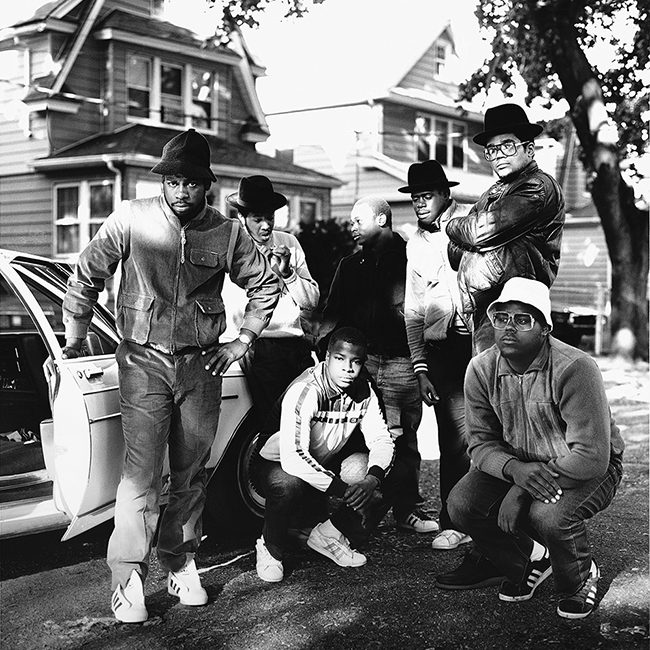



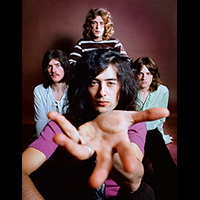

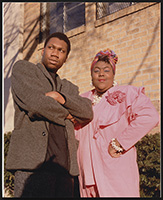
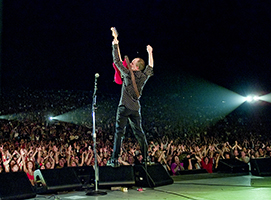
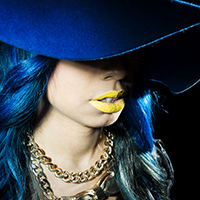

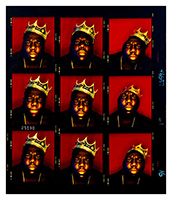
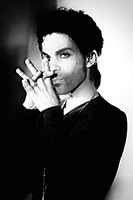
surreal as it is, loving it